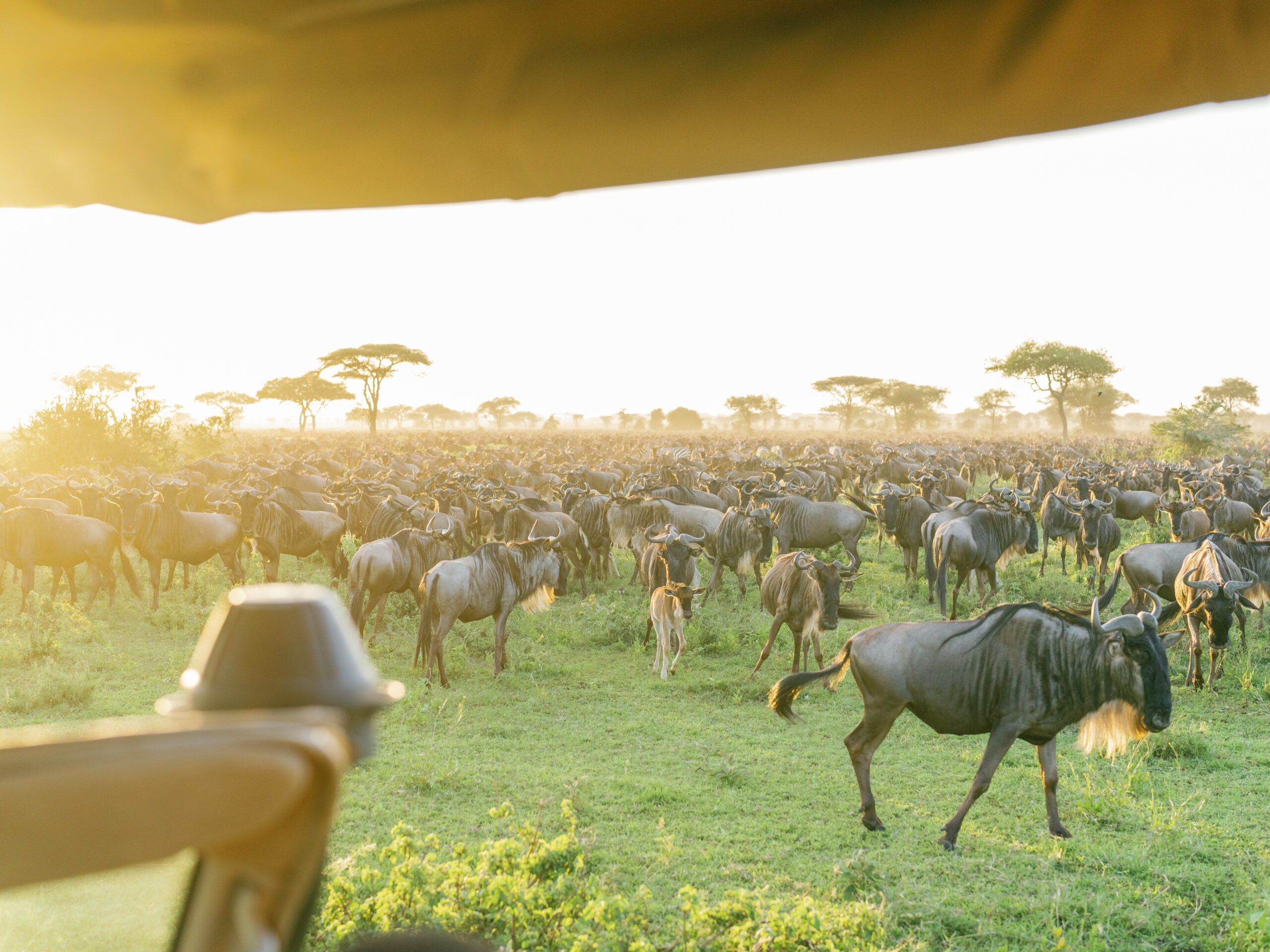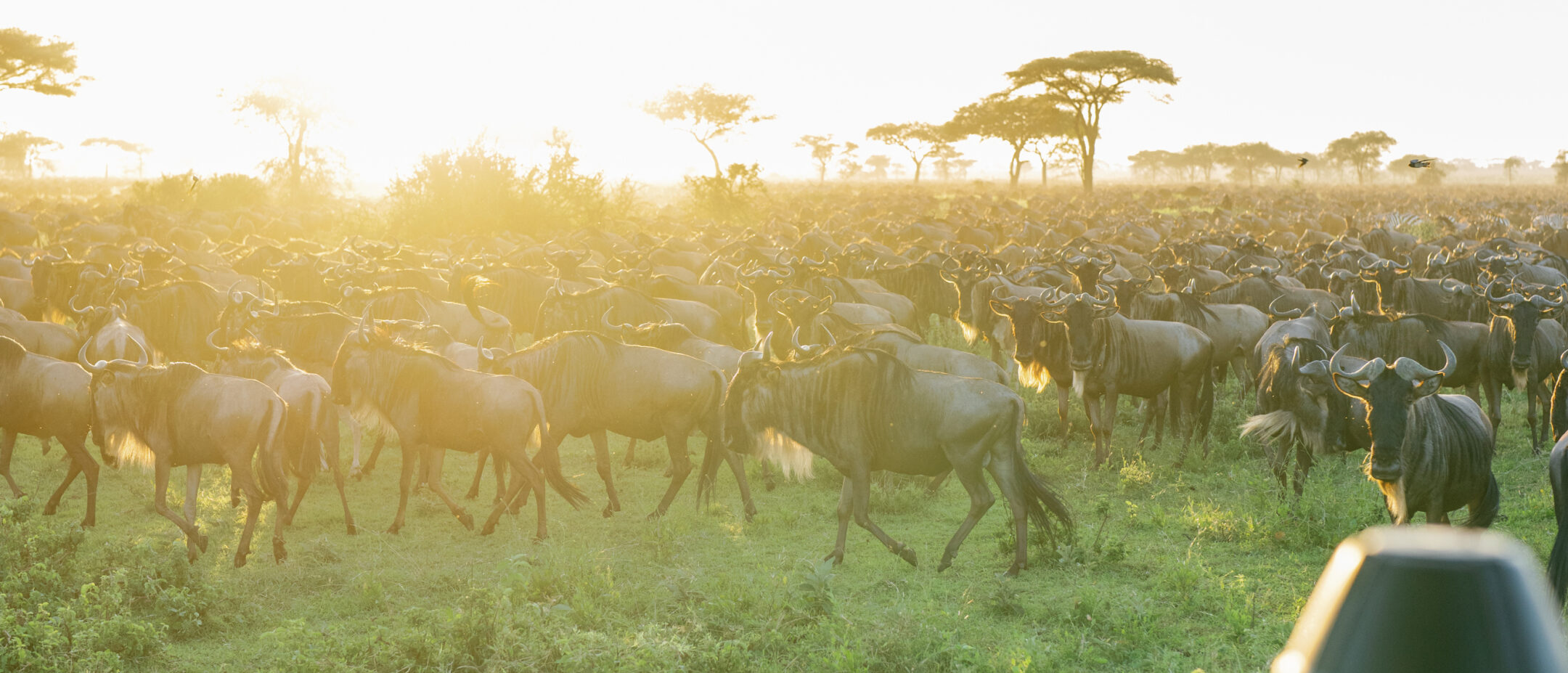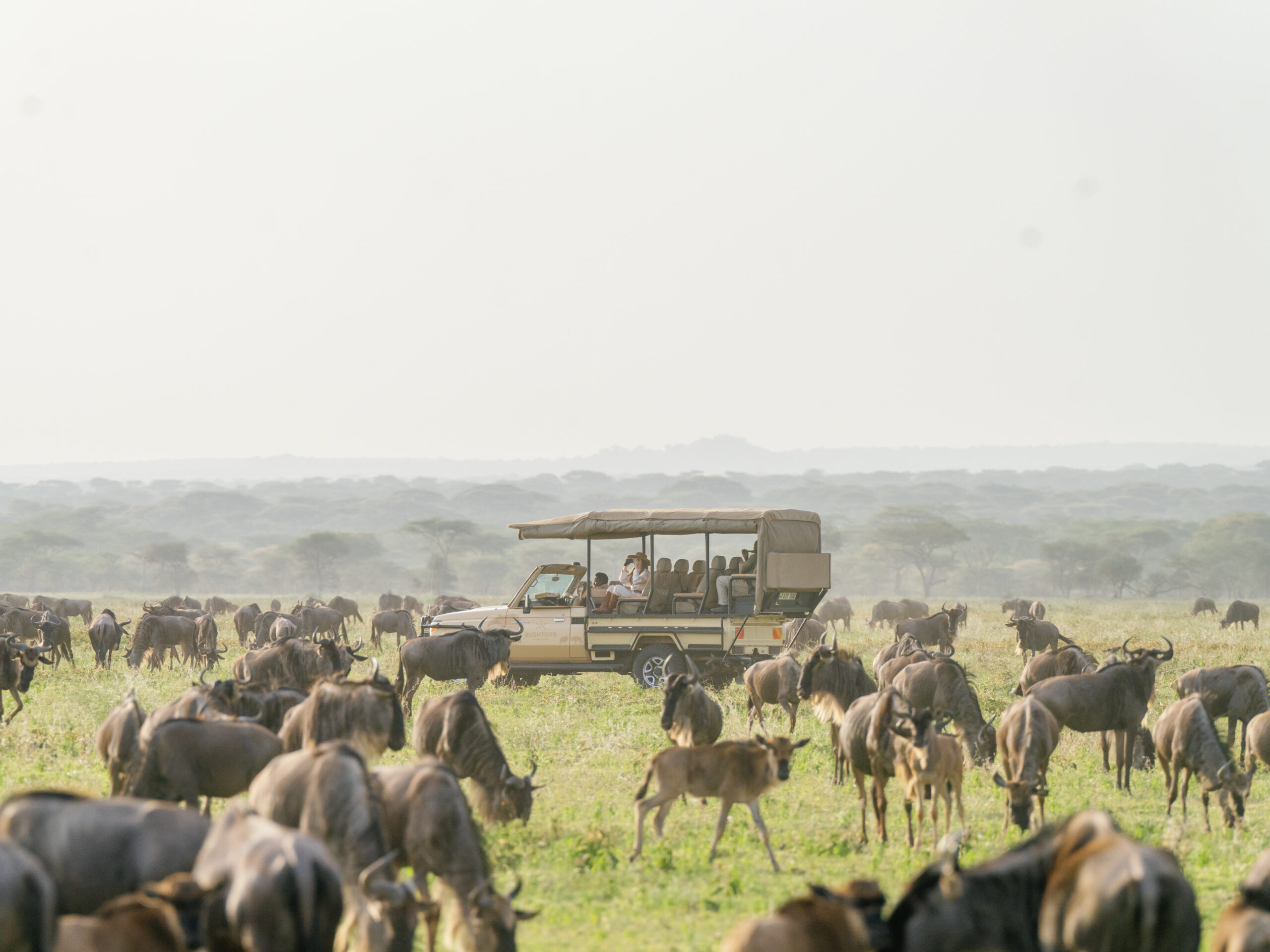Front Row seats to Migration Magic
Book your ringside seats to the 2025 Migration Magic
We are delighted to share that the 2025 Great Migration is officially in full swing, and our guests at Mara Bushtops as well as those in Tanzania, staying at both Roving Bushtops and Serengeti Bushtops, are enjoying spotting huge herds on their game drives.
One of our fabulous rangers at Mara Bushtops, Joseph Kaimenyi, had a particularly fabulous experience last week. On the morning of July 7th, Joseph observed the early signs of the migration with a tightly grouped herd of approximately 200 to 400 zebras crossing into the Masai Mara.
They were calmly grazing near the Kenya–Tanzania border, accompanied by several elands. In the distant southern horizon, within Tanzanian territory, a vast concentration of wildebeests was visible—gathering momentum.
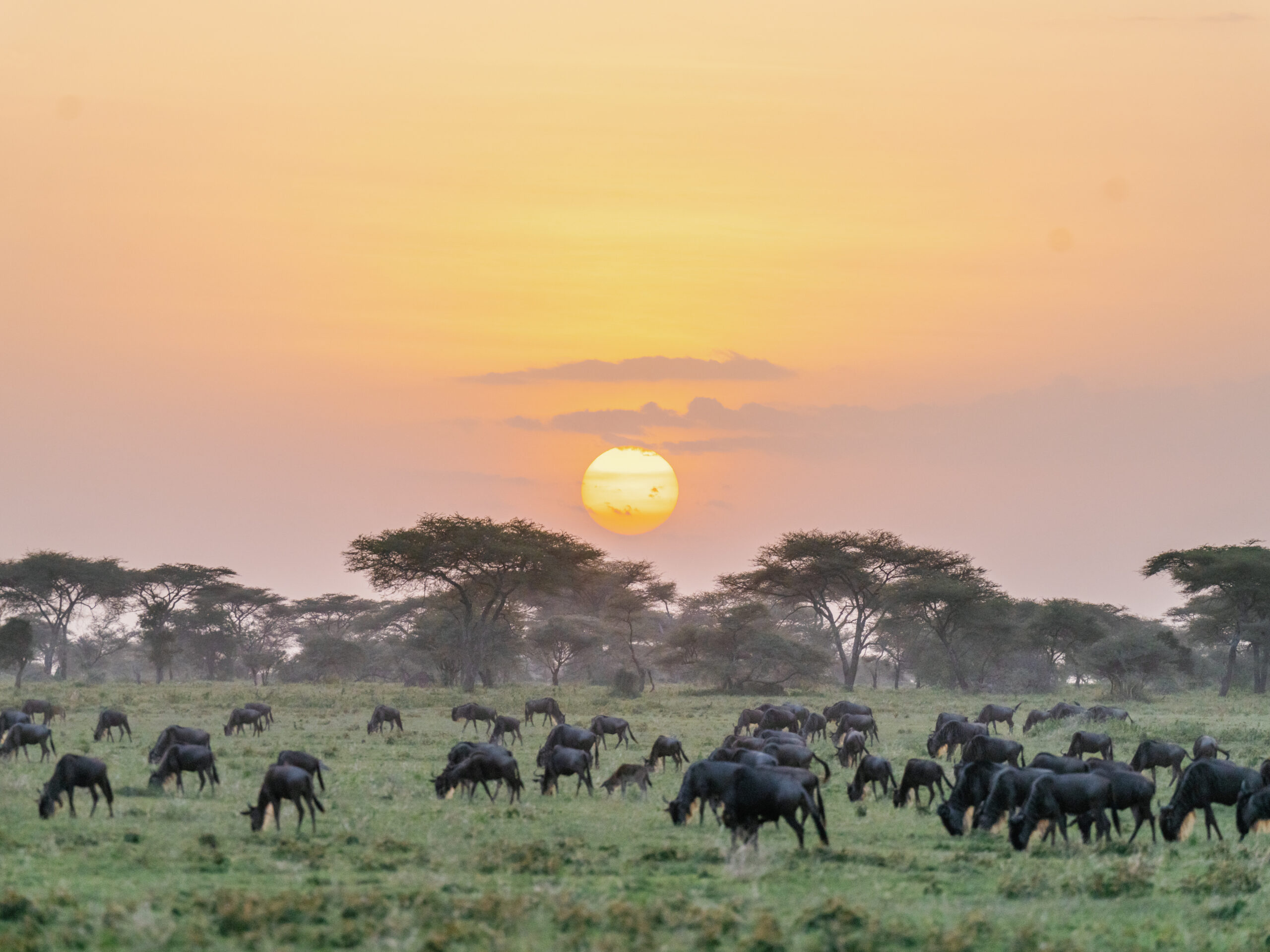
Breaking Gnus and Zebra crossings
By the following morning, the landscape had transformed. Tens of thousands of wildebeests and zebras had successfully crossed the Sand River, flooding the Masai Mara just below the Lookout Crossing Point. This marked the first major wave of the 2025 migration into Kenya.
The herds are now in continuous motion, advancing steadily north and west toward the Lookout Hill region, with clear directional flow toward the Mara River. Based on the current pace and density, we anticipate that in the coming days, the full migration—approximately 1.5 million wildebeests, 500,000 zebras, and over 18,000 elands—will have crossed into the Masai Mara, setting the stage for one of nature’s most spectacular events.
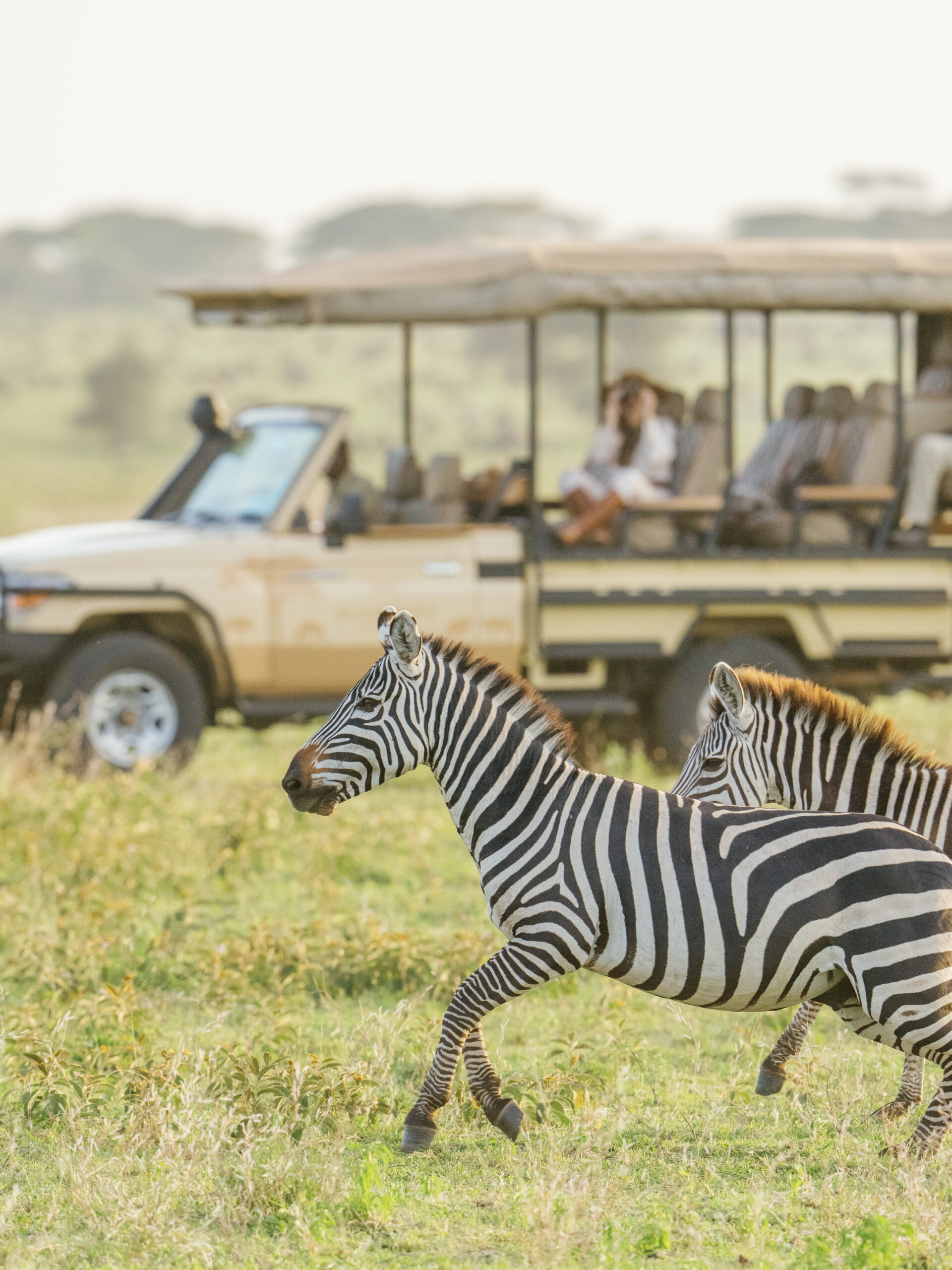
Five Fascinating Facts about the Great Migration
- The Great Migration in East Africa is the world’s largest and longest overland migration and is considered one of the Seven Natural Wonders of the World. It is a natural phenomenon whereby around 1.5 to 2 million wildebeest, alongside around 200,000 zebra and thousands of gazelles migrate annually between the Serengeti in Tanzania and the Mara in Kenya.
- The herds follow a circular route of around 800 kms (around 500 miles) through the Serengeti-Mara ecosystem, in search of fresh grazing and water. This necessitates numerous dangerous river crossings, the most famous of which is is the Mara River crossing, often in hot pursuit of opportunistic, hungry predators – from crocodiles to lions, leopards, cheetahs and hyenas.
- The calving season forms a significant part of the migration, when around half a million wildebeest calves are born, typically in the southern Serengeti from January to March. These calves are able to walk and keep up with the herd within minutes of being born! That is exactly why we move Roving Bushtops from its new home in the Northern Serengeti ( June to end October) down into the Southern Serengeti/Kusini from 21st December to 31st March each year.
- There is no particular “Gnu leader”, but the herds move in a swarm-like structure, seemingly relying on the “safety in numbers” herd mentality. Some researchers believe that pheromones released from wildebeest hooves may help dispersed herds catch up.
- Over 250,000 wildebeest die each year during the migration due to exhaustion, predators and injury/death during river crossings.
When is the best time to visit to experience the migration in full swing?
Whilst nothing is ever certain in Nature, our many years of experience, along with our adept skills of observation in reading the small signs, have helped us predict roughly when the herds will be on the move, and where.
Whilst there is never a bad time to visit East Africa, if you are particularly set on ticking the migration off your travel bucket list, then you might find our interactive ‘WOW’ (Where’s Our Wildebeest) map useful!
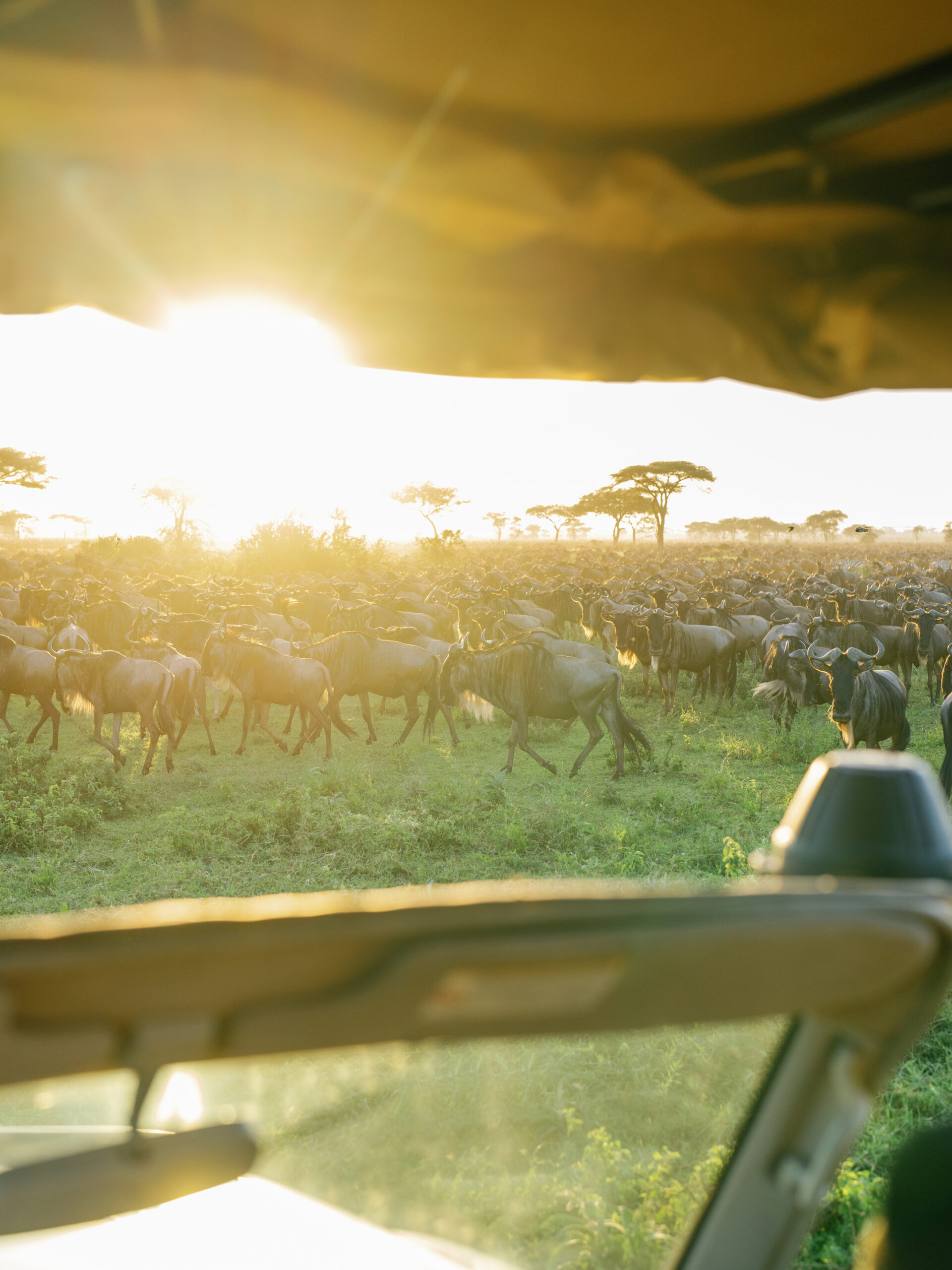
Book your “Beest” of a Bushtops Safari
If your dream is to watch herds of herbivores in search of greener pastures risk life and limb to bravely traverse between the Serengeti and the Mara, crossing gushing rivers, at the mercy of crocodiles and other predators, then be sure to book well ahead to stay at Mara Bushtops in Kenya and Serengeti Bushtops in Tanzania. From each side of the river borders, we have a prime view of multiple crossing points. Sometimes the herds even move right through our Serengeti luxury camp. The views are a bit like being in the Royal Box for the Theatre of Nature! Watch this video, taken at Roving Bushtops.
For the ultimate Migration experience you could even consider booking our brand new 6×6 Beest, which offers the ultimate in safari comfort with added height for those iconic shots of the plains and crossings. Ideal for a luxury African safari adventure.
All images by Oliver Fly Photography
